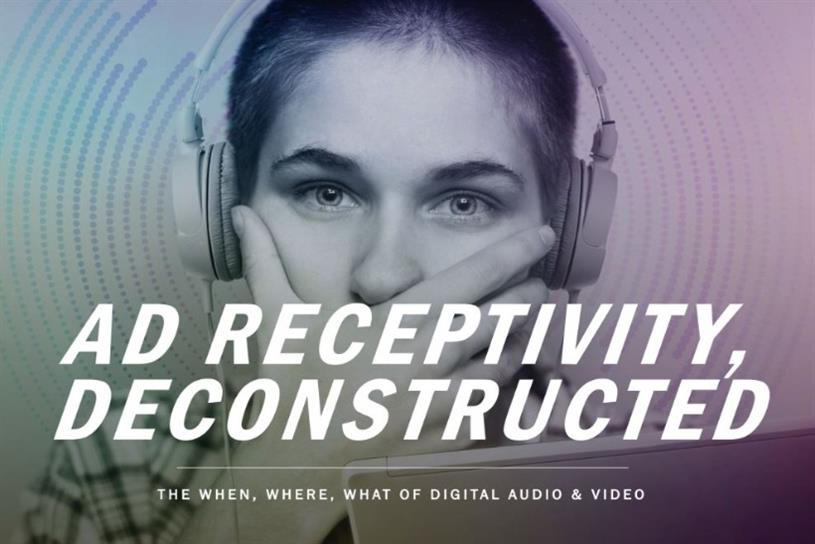by Oliver McAteer
Source: campaignlive.com, June 2019
Research points to factors that drive our willingness to see ad before we’re exposed to it.
Mood, needs state and situation are all key indicators of ad receptivity, according to a new study by MAGNA and IPG Media Lab in partnership with Pandora.
The research, which surveyed more than 2,000 respondents who kept an online diary of their digital audio and video consumption over 24 hours, found that audio listeners and video viewers are similar in that they are most receptive to ads when in a state of excitement and when spending time with family.
However, they exhibit distinct differences as well.
Listeners are generally 35 percent more open to ads and specifically receptive when relaxed and focused, while viewers are more easily targeted when they’re stressed.
“This study validates that digital audio and video have infinite moments to reach people willing to be exposed to advertising,” said Keri Degroote, SVP research and analytics at Pandora. “Marketers who understand the when, the where and the what to meet people’s state of mind and needs state will win their attention.”
The study unearthed a number of other important insights.
Mood matters
Ad receptivity is dependent on a person’s emotional state. Good moods (excited, relaxed, focused, happy) means more willing to see advertising for audio, whereas an excited mood translates to better ad receptivity for video viewers. When people are tired, they’re least receptive to ads on both audio and video.
Generational divide
Gen Z’s are an elusive audience that are least receptive to video and audio advertising. Looking across generations, Millennials are receptive to both audio and video ads, although video reported a four percent higher receptivity to video, whereas GenX are 32 percent more receptive to digital audio than digital video advertising.
Situational sensitivity
Digital Video viewers are highly receptive to ads when spending time with family and dramatically less so when pursuing interests and hobbies. Audio listeners, however, stayed relatively situation-agnostic with receptivity levels remaining fairly even across different scenarios.
Parents are dramatically more receptive to ads
Gen Z, Millennial and Gen X parents are dramatically more open to ads than their childless counterparts by dramatic margins. For instance, Millennial parents are 27 percent more receptive to video ads and 15 percent more receptive to audio ads than those without children.
Content connection
Audio is audio when it comes to ad receptivity with content format (music, podcast, audiobook) does not matter, unlike Video where content length impacts ad receptivity. Video viewers were most receptive to mid-length content like TV shows.
“Digital audio and video provide significant opportunities for advertisers to target audiences at the most opportune moments, but it requires really understanding what they are feeling and thinking when consuming different media,” said Kara Manatt, SVP, Intelligence Solutions & Strategy, MAGNA Global.
“People are focused when listening to rock music, excited when watching action movies… their mood states vary wildly throughout the course of a day and so does their openness to receiving an ad. Brands that understand the mood behind the action are dramatically more likely to grab the attention of listeners and viewers.”

